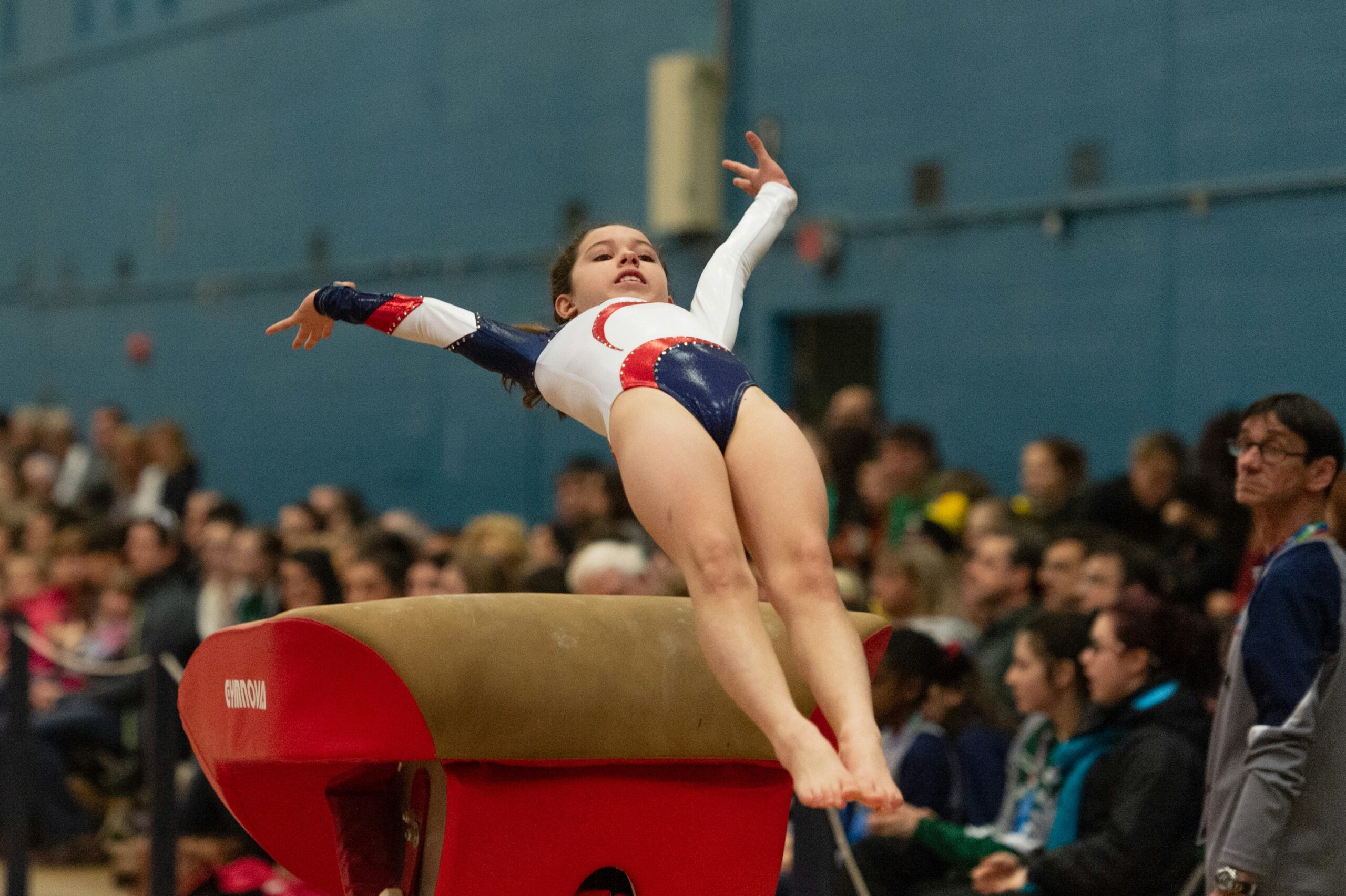Gymnastics is one of the most captivating sports at the Olympics, showcasing the athletes’ strength, flexibility, and precision. As we approach the next Olympic Games, the evolution of gymnastics scoring systems has become a hot topic. The introduction of advanced technology has transformed the way scores are calculated, ensuring greater accuracy and fairness. This blog post delves into the history of gymnastics scoring, the impact of technological advancements, and what this means for the future of the sport.

A Brief History of Gymnastics Scoring
Early Years
In the early years of Olympic gymnastics, scoring was subjective, heavily reliant on the judges’ perspectives. Each judge would score routines based on personal interpretation, leading to significant discrepancies and debates over fairness. The 10-point system, introduced in 1952, aimed to standardize scoring, but inconsistencies remained due to the subjective nature of judging.
The Perfect 10 Era
The “Perfect 10” era, immortalized by Nadia Comăneci’s flawless routines in the 1976 Montreal Olympics, became a cultural touchstone. Despite its appeal, the system had limitations. It did not adequately account for the increasing complexity of routines, prompting the need for a more nuanced approach.
The Introduction of the Code of Points

In 2006, the International Gymnastics Federation (FIG) introduced the Code of Points, a new scoring system that evaluates both the difficulty (D-score) and execution (E-score) of routines. This dual-component system allows for a more comprehensive assessment of an athlete’s performance, encouraging innovation and technical difficulty while maintaining the importance of flawless execution.
Technological Advancements in Gymnastics Scoring

Video Replay and Analysis
The use of video replay has revolutionized gymnastics judging. High-definition cameras capture every detail of a routine, allowing judges to review performances frame-by-frame. This technology ensures that no element is missed and reduces the margin of error in scoring.
- Case Study: At the 2016 Rio Olympics, video replay was instrumental in resolving scoring disputes. During the men’s all-around final, video analysis confirmed Kohei Uchimura’s complex elements, securing his gold medal.
Artificial Intelligence and Machine Learning
Artificial Intelligence (AI) and Machine Learning (ML) are making their way into gymnastics scoring. These technologies analyze biomechanical data, such as body angles and movement patterns, to provide objective assessments of routines. AI can identify subtle differences in execution that the human eye might miss, ensuring even greater accuracy.
- Example: IBM’s Watson has been piloted in gymnastics to analyze performances in real-time, offering insights that complement traditional judging methods.
Wearable Technology
Wearable technology, such as motion sensors and accelerometers, is being integrated into training and competition. These devices provide real-time data on an athlete’s performance, including speed, force, and body position. This information helps coaches fine-tune techniques and offers judges precise measurements for scoring.
- Example: The FIG has explored the use of wearable sensors to measure the height and rotation of gymnasts during vaults and tumbling passes, providing an objective basis for scoring.
The Impact of Technological Advancements

Fairness and Transparency
The integration of technology in gymnastics scoring has significantly increased fairness and transparency. Athletes and coaches have greater confidence in the scoring process, knowing that objective data supports the judges’ decisions. This transparency is crucial for maintaining the sport’s integrity and the athletes’ trust.
Encouraging Innovation
With more accurate scoring, gymnasts are encouraged to push the boundaries of difficulty and creativity. Knowing that their efforts will be objectively recognized, athletes are more likely to experiment with new elements and combinations, driving the sport forward.
Enhanced Viewer Experience
For spectators, technological advancements enhance the viewing experience. Real-time data and analysis provide deeper insights into the intricacies of each routine, making the sport more accessible and engaging for a broader audience. Interactive apps and augmented reality (AR) features allow fans to understand the technical aspects of gymnastics, fostering greater appreciation for the athletes’ skills.
Challenges and Future Directions

Balancing Technology and Human Judgment
While technology offers numerous benefits, it is essential to balance it with human judgment. The artistry and grace of gymnastics are subjective qualities that technology alone cannot fully capture. The future of gymnastics scoring lies in integrating technological precision with the nuanced understanding of experienced judges.
Ensuring Accessibility
Ensuring that technological advancements are accessible to all nations and athletes is another challenge. Wealthier countries may have more resources to invest in cutting-edge technology, potentially creating disparities. The FIG must work to ensure that all athletes have access to the same level of technological support, maintaining a level playing field.
Conclusion: Embracing the Future of Gymnastics

The evolution of gymnastics scoring is a testament to the sport’s commitment to fairness, innovation, and excellence. As technology continues to advance, the future of gymnastics looks brighter than ever, with more accurate scoring and exciting new possibilities for athletes and fans alike.
We invite you to share your thoughts on these technological advancements. How do you think technology will continue to shape the future of gymnastics? Leave a comment below and join the conversation.
References:
- International Gymnastics Federation (FIG). (2021). “The Code of Points Explained.” Retrieved from FIG
- “Video Replay in Gymnastics Judging.” (2016). Journal of Sports Technology. Retrieved from SportsTechJournal
- IBM Watson in Gymnastics. (2019). “Artificial Intelligence Enhancing Judging Accuracy.” Retrieved from IBM




